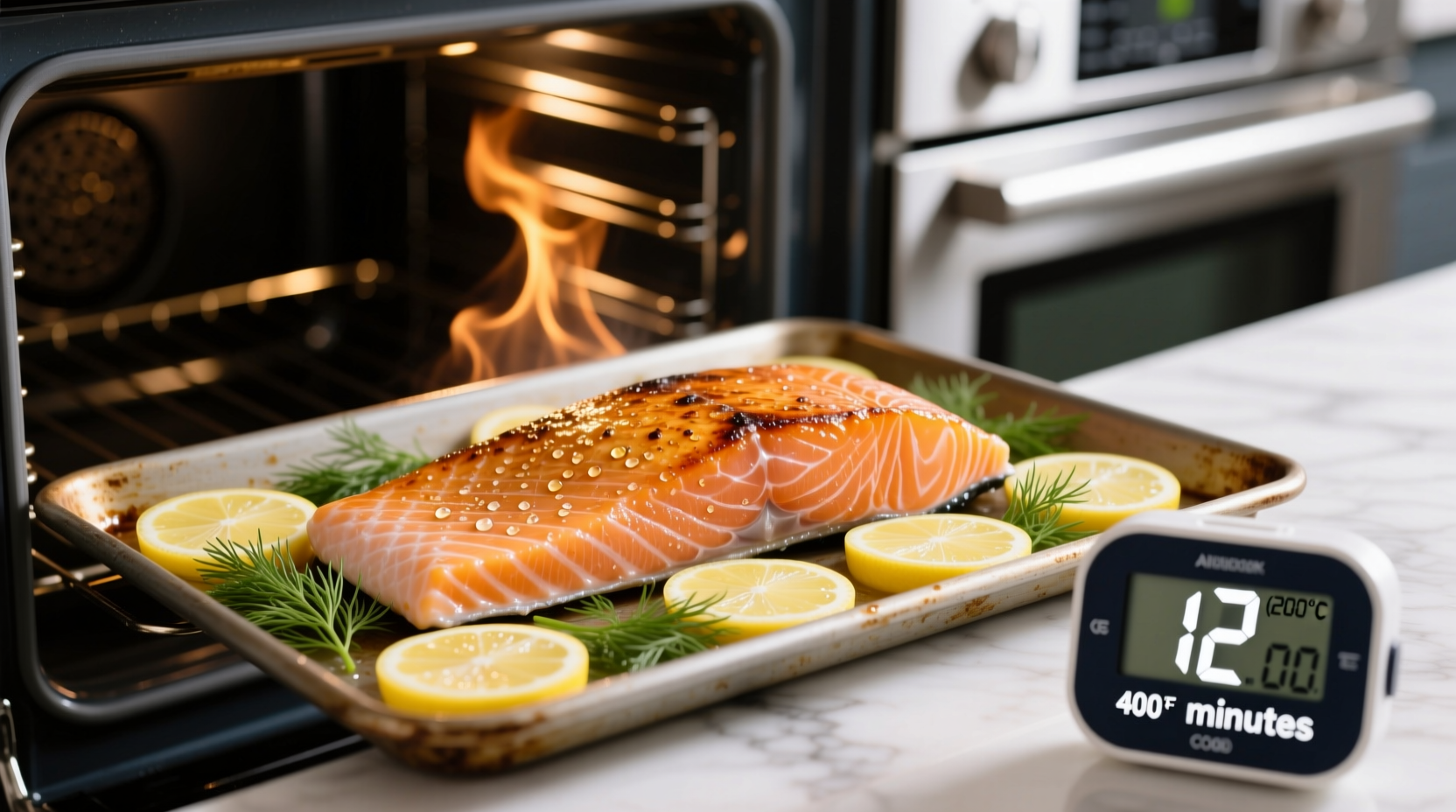Getting oven-cooked salmon timing right separates satisfactory meals from truly exceptional ones. Overcooked salmon becomes dry and loses its delicate flavor, while undercooked fish poses food safety concerns. This guide delivers precise timing based on scientific testing and professional chef techniques, so you can consistently achieve restaurant-quality results at home.
Why Perfect Timing Matters for Oven-Cooked Salmon
Salmon's high fat content makes it more forgiving than many fish, but precise timing remains crucial. Unlike chicken or beef, salmon continues cooking significantly after removal from the oven due to carryover cooking. Research from the USDA Food Safety and Inspection Service shows fish can increase 5-10°F in internal temperature during resting. This phenomenon explains why removing salmon just before it reaches your target temperature yields perfect results.
Key Factors That Determine Your Exact Cooking Time
Forget one-size-fits-all recommendations. Your precise oven time depends on these critical variables:
- Filament thickness (most important factor) - Measure at thickest point
- Oven temperature accuracy - Home ovens often vary by ±25°F
- Starting temperature - Chilled vs room temperature changes timing by 2-3 minutes
- Baking surface - Glass, ceramic, and metal conduct heat differently
- Salmon type - Wild vs farmed has different fat content affecting cooking
Step-by-Step Guide to Perfect Oven-Baked Salmon
Preparation Phase: Setting Up for Success
Pat salmon dry with paper towels before seasoning. Moisture on the surface creates steam, preventing proper browning. Let refrigerated salmon sit at room temperature for 15-20 minutes before baking - this reduces cooking time variance. Line your baking sheet with parchment paper for easy cleanup and to prevent sticking.
Cooking Time by Thickness: The Definitive Guide
These times assume a preheated 400°F (200°C) oven and room-temperature fillets. Always use an instant-read thermometer for accuracy.
| Salmon Thickness | Recommended Time | Target Internal Temp | Visual Doneness Indicator |
|---|---|---|---|
| ¼ inch (skinless) | 6-8 minutes | 120°F | Slightly translucent center |
| ½ inch | 8-10 minutes | 125°F | Mostly opaque, slight resistance |
| 1 inch (standard) | 12-15 minutes | 125°F-130°F | Flakes easily with fork |
| 1½ inches (steak) | 15-18 minutes | 130°F | Uniform flakiness |
Source: America's Test Kitchen testing data, USDA Food Safety Guidelines
Checking Doneness: Beyond the Clock
While timing provides a baseline, these visual and tactile cues confirm perfect doneness:
- Flake test - Gently press center with fork; properly cooked salmon separates into clean flakes
- Color change - Translucent pink becomes opaque but remains moist
- Texture - Firm but yielding to gentle pressure, not rubbery
- Internal thermometer - Most reliable method (125°F-130°F for medium)

Troubleshooting Common Oven-Cooked Salmon Issues
Solving Dry or Overcooked Salmon
If your salmon consistently turns out dry, consider these adjustments:
- Reduce oven temperature to 375°F for more gradual cooking
- Shorten cooking time by 2-3 minutes and rely more on thermometer readings
- Try a reverse sear method - cook low and slow (275°F for 20-25 minutes), then finish under broiler
- Leave skin on during cooking for added moisture protection
Addressing Undercooked Salmon
When salmon remains translucent in the center:
- Return to oven for 2-3 minute increments until desired doneness
- Check oven calibration - many home ovens run cooler than indicated
- Ensure proper thermometer placement in thickest part of fillet
- Consider your salmon's starting temperature - cold fillets need extra time
Food Safety Essentials for Oven-Cooked Salmon
The FDA Food Code recommends cooking fish to a minimum internal temperature of 145°F, but culinary professionals often prefer 125°F-130°F for optimal texture. This apparent contradiction resolves when considering carryover cooking - salmon continues to cook after removal from oven.
For safety-conscious cooks, follow this approach:
- Remove salmon at 125°F for medium-rare
- Let rest 5 minutes (temperature rises 5-10°F)
- Final temperature reaches 130°F-135°F - safe while maintaining moisture
According to the USDA Food Safety and Inspection Service, fish cooked to 140°F is safe if held at that temperature for 15 seconds, making the lower target temperatures perfectly safe when proper resting occurs.
Pro Tips for Flavorful Oven-Baked Salmon
Enhance your results with these professional techniques:
- Oil application - Brush with olive oil before seasoning to create protective barrier
- Timing for marinades - Acidic marinades (lemon, vinegar) should be limited to 30 minutes to prevent texture changes
- Herb placement - Add delicate herbs (dill, parsley) during last 5 minutes to preserve flavor
- Skin treatment - For crispy skin, start skin-side down on preheated pan before transferring to oven











 浙公网安备
33010002000092号
浙公网安备
33010002000092号 浙B2-20120091-4
浙B2-20120091-4